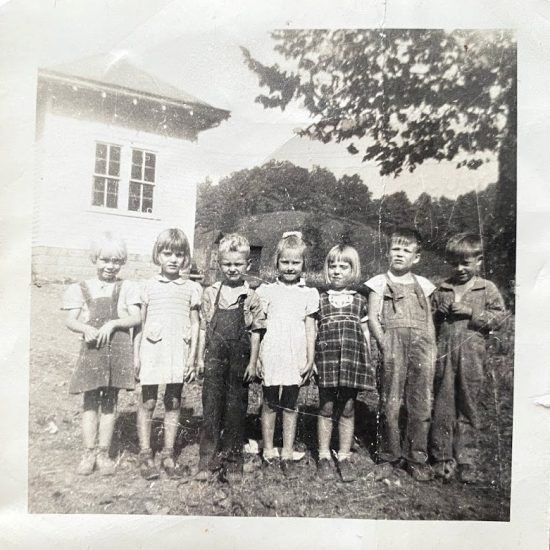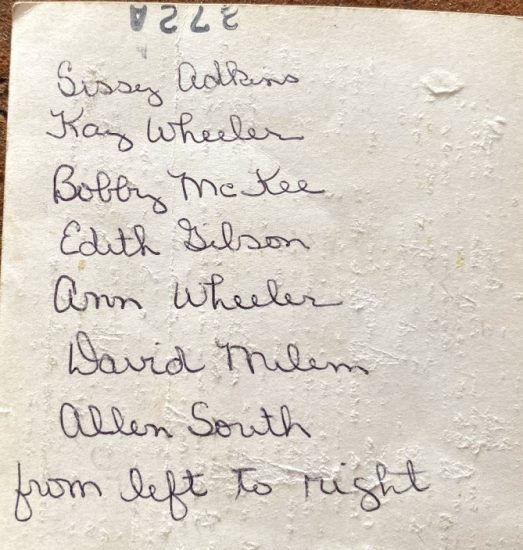

Photo from David Milem collection, taken around 1944 at Solida Grade School. The teacher was Irene Stewart. She only missed one day of work in seven years when her husband, Stanley Stewart, was being shipped out to serve in the war. She wanted to spend time with him, so she took off on Friday.
The substitute teacher for Mrs. Stewart was Mr. Mort Wiseman. Mr. Stewart was not only the teacher but the janitor as well. She had to build a fire in the stove and keep it burning while teaching Grades 4-5-6-7. David Milem said he only had three kids in his class in 1944. The Solida Grade School was located on Solida Road in South Point, Ohio.
REMINISCENCE NO. 3. FROM: H. IMES
Ironton Register, March 16, 1899
Editor Register:
In about 1843, we were attached to the Ballard School District on Solida, and the next two terms of school I attended were in this district. The teachers were Mr. Keith and John S. Kelvey. Mr. Keith was a cripple and had to use a crutch, but he could almost jump across the schoolhouse at one bound when he saw a pupil in mischief.
My recollections of him as a teacher are not favorable towards him but are just the reverse for Mr. Kelvey. A more kind, indulgent, and competent teacher could not be found. “Kind words can never die, no, never die.” What a soothing and cheering influence they leave with us for a lifetime.
The following are some of the names of pupils who attended these schools: Stephen, Isaac, Nancy and Eliza Ballard, Caleb, and Med Arthur. Several more families, Jacob and Samuel Bowman, Silverthorn, Croly, Dunn, Grogan, and others, patronized these schools. All the schools I attended in 1846 were subscription schools; each scholar’s parents paid so much per scholar, from $1.00 to $2.00 per term of three months.
Most settlers then were of very limited means, and raising this small amount of money was quite a burden to them. But they worked and skimped to raise this small amount, realizing the importance of limited education, at least for their boys and girls. Seeing men of good business ability sign their names with a cross was unusual. I remember hearing father tell of a Mr. Jim Thomas who lived on the river not far above Ironton. He followed keel boating and, later on, steam boating, and he did not know how to read but could calculate the amount of a freight bill as quickly as anyone.
It seems like a Herculean task our forefathers undertook when they resolved to make this vast wilderness what it is today. Sixty years ago, it was almost an unbroken world of dense forests; today, they have nearly disappeared. Orchards, meadows, vineyards, and fields of waving grain have taken their place.
Hills and dales are dotted over with comfortable dwellings, which now appear in the place of the rude cabins of ye olden times. Churches and schoolhouses, in proximity, are found nestled on these hills and valleys; and are attended by a wide awake, progressive population, quite a number of them being descendants of the first pioneers of that locality. H. Imes. Imes, Kans. March 12, 1899

0 Comments